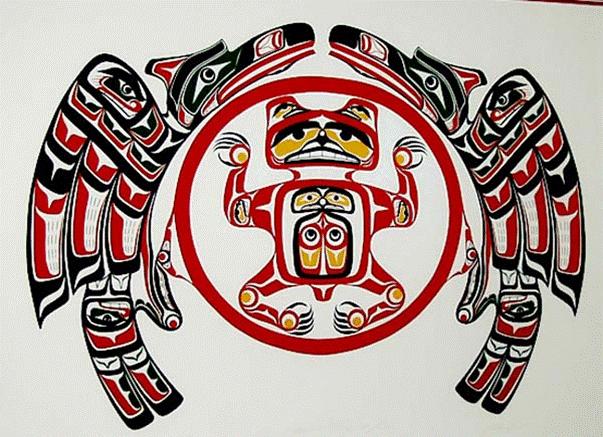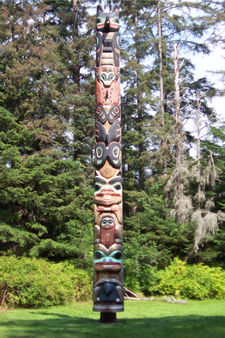
The Tlingit wore animal skin pants, leather aprons, and skin blankets. Men and women wore nose wrings and earrings. Some Tlingit people pierced their lower lips and wore tattoos. The Tlingit had special clothing that they wore to feasts called potlatches. At potlatches, the Tlingit wore carved masks, potlatch hats, dancing dresses, and robes called Chilkat robes.
A fish called salmon was the most important food for the Tlingit. In early spring, millions of salmon swan from the ocean to the rivers to lay their eggs. The Tlingit called this the salmon run. During a salmon run, a family could catch more than 1,000 pounds of salmon. The Tlingit also ate other types of fish, sea lion, and otter. They gathered clams and mussels from the shores. They hunted goat, deer, elk, and bear in the forests.
The Tlingit built large plank houses. They used cedar, maple, and spruce trees to build their houses. The Tlingit painted their houses with bright pictures of colorful animal designs. These designs stood for a family's clan. Huge wooden totem poles stood in front of each home. The Tlingit carved animal symbols on the totem poles to tell the history of their families.

Each plank house was home to several families. The families belonged to the same clan. When a boy reached eight years old, he went to live with his mother's brother. His uncle taught hiim how to hunt game animals. Mothers and grandmothers taught girls how to weave blankets and make baskets. The Tlingit used storytelling to pass down their history to both boys and girls.